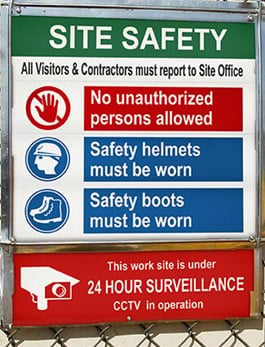Technology in Construction: From the Ground Up
03
February,
2023
3 MINUTE READ

One of the biggest construction trends in 2020 is smart building. From voice activation services to remote programming-smart technology is gaining popularity in homes and workplaces. However, another facet of smart building extends tech implementation to the actual building and planning processes to improve overall safety and efficiency in construction.
Forward-thinking companies such as Amazon, Apple, and Google are covering a lot of ground to strengthen industrial operations and are digging deep to boost the construction industry. This uniting of tech brain and construction brawn aims to revolutionize a technologically deficient construction industry.
"(Tech) companies are advancing a variety of construction methods to build ambitious development projects that re-imagine everything from the wood used in homes to the ways we think about private vs. communal space," industry researcher CB Insights wrote in its recent report on the future of housing.
Companies are digging deeper, spawning ideas and working to help expand technology in the construction industry. Part of that process is to get the construction industry online and caught up technologically so that it can go forward with futuristic plans.
Award-winning company Turner Construction says it is continuously working hard to take advantage of opportunities without losing sight of what the future may bring. "A key element of our company vision is to develop and embrace emerging technologies and processes," the company said in a statement. Turner's executive vice president, Pat Di Filippo, attributes the company's successes and ability to meet challenges to the adoption of lean construction practices. "Lean is not just a process, it is a guide to treating people well on the job," he said.
Disruption Mitigation Strategies
One in 10 contractors considers their worksites to be highly efficient, according to research by The USG + U.S. Chamber of Commerce Commercial Construction Index. In 2018, 1,008 worker fatalities in private industry (1 in 5) were in construction, according to the Occupational Safety and Health Administration. Efficiency and safety go hand in hand. The safer the jobsite, the less incidence of a project's downtime. Here are five ways new technology is assisting in construction efficiency and safety:
- Consultants: Consider the value of safety throughout a project, from cost estimates, drawing budgets, and resolving differences among parties.
- Gear: Invest in modern personal protective equipment. Items such as fall protection and hard hats are getting better with new technology.
- Communication: Utilize new data and information that quickly uploads to mobile devices. Ensure signs and labels are readily available for a dynamic and changing project to thoroughly communicate to all contractors and workers. Host toolbox talks and safety events using digital resources including articles, quick tips, infographics, videos and more.
- Programs: Keep track of gear and safety assets with a digital inspection and asset management system. Invest in tools such as predictive analytics to help capture and retain data to reduce lifecycle operations costs.
- Equipment: Construction projects are seeing the benefits of virtual reality for training and drones to help keep workers safe on the ground instead of on high up scaffolds. Robotics are also helpful to recover dropped objects. Many companies are utilizing 3D printing for cost-effective materials and design work.
As infrastructure gains investments and partnerships, standards and codes for safety will also reflect changes that will come with improvements and innovations. The American National Standards Institute (ANSI) and the National Institute of Standards and Technology (NIST) recently held discussions on codes and standards and the organizations' roles in supporting strong, practicable, and resilient 21st century infrastructure solutions to further improve safety.
Smart Safety
 Carbon fiber materials, cross-laminated timber, and productivity monitoring are just a few ways technology is improving the construction industry in the office and on the job site. Enterprises in construction are boosting Environmental Health and Safety programs through information technology and modern safety best practices.
Carbon fiber materials, cross-laminated timber, and productivity monitoring are just a few ways technology is improving the construction industry in the office and on the job site. Enterprises in construction are boosting Environmental Health and Safety programs through information technology and modern safety best practices.
Data is driving change to create more efficient opportunities for training and safety education. A recent Pew Research Center report shows about 77% of Americans own a smartphone. With more mobile opportunities, employees can consume key safety training content anywhere through easily downloadable information. Jobsite construction workers can gain a better understanding of how modern methods of construction perform. For example, EHS managers can now send an employee a link to gain quick access to job site safety tips.
Employers can provide instructions on completing new tasks and warn of potential hazards through up-to-date educational materials and informative signs and labels. For even faster results and unique applications, companies can utilize portable and innovative industrial labeling machines. Through these tips and more, construction industry professionals can stay on top of safety and technology trends and reap the rich rewards of technology.
Need a quick breakdown on requirements? Download our free Construction Safety Manager's Guide.
RELATED RESOURCES

6 Steps for Improving Construction Housekeeping
Construction sites can get messy pretty quickly if proper housekeeping is not routinely enforced. Pre and ...
Read
Improve Falling Objects, Struck-Bys in Construction
Falling objects and struck-bys are some of the most common job hazards that lead to injury or death in ...
Read
Construction Leaders Investing in Future of Overall Growth
Most crane counts in big cities throughout the U.S. are holding steady or growing. This is an indicator that ...
Read.png)


